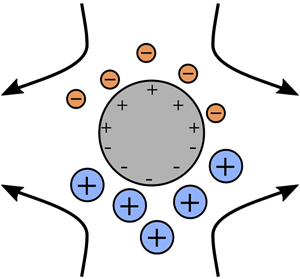Crossref Citations
This article has been cited by the following publications. This list is generated based on data provided by
Crossref.
Feng, Huicheng
Zhao, Lingqi
Zhong, Xin
Lei, Xingfeng
and
Wong, Teck Neng
2021.
Non-monotonic dependence of induced-charge electro-osmosis on ion concentration.
Colloids and Surfaces A: Physicochemical and Engineering Aspects,
Vol. 622,
Issue. ,
p.
126604.
Henrique, Filipe
Zuk, Pawel J.
and
Gupta, Ankur
2022.
Charging dynamics of electrical double layers inside a cylindrical pore: predicting the effects of arbitrary pore size.
Soft Matter,
Vol. 18,
Issue. 1,
p.
198.
Wang, Zhisheng
Mu, Yijiang
Lyu, Dengping
Wu, Ming
Li, Jiahui
Wang, Zuochen
and
Wang, Yufeng
2022.
Engineering shapes of active colloids for tunable dynamics.
Current Opinion in Colloid & Interface Science,
Vol. 61,
Issue. ,
p.
101608.
Galen Wang, J.
Ladiges, Daniel R.
Srivastava, Ishan
Carney, Sean P.
Nonaka, Andy J.
Garcia, Alejandro L.
and
Bell, John B.
2023.
Steric effects in induced-charge electro-osmosis for strong electric fields.
Physical Review Fluids,
Vol. 8,
Issue. 8,
Ganguly, Arkava
and
Gupta, Ankur
2023.
Going in circles: Slender body analysis of a self-propelling bent rod.
Physical Review Fluids,
Vol. 8,
Issue. 1,
Chen, Di-Lin
Luo, Xiao-Ping
Su, Zheng-Gang
Luo, Kang
and
Yi, Hong-Liang
2023.
Thermal gradient and elastic dependence of induced charge electro-osmosis in viscoelastic fluids.
Physics of Fluids,
Vol. 35,
Issue. 1,
Wang, Xiaoping
Xu, Huanying
and
Qi, Haitao
2023.
Induced-charge electroosmosis flow of viscoelastic fluids under different voltage arrangements.
Physics of Fluids,
Vol. 35,
Issue. 11,
Katzmeier, Florian
and
Simmel, Friedrich C.
2023.
Microrobots powered by concentration polarization electrophoresis (CPEP).
Nature Communications,
Vol. 14,
Issue. 1,
Pandey, Doyel
Bhattacharyya, Somnath
and
Hardt, Steffen
2024.
Net flow of charge-asymmetric electrolytes through uncharged channels and over uncharged spheres due to direct-current electroosmosis.
Journal of Fluid Mechanics,
Vol. 997,
Issue. ,
Goyal, Vishal
Datta, Subhra
and
Chakraborty, Suman
2024.
Generalizing electroosmotic-flow predictions over charge-modulated periodic topographies: tuneable far-field effects.
Journal of Fluid Mechanics,
Vol. 990,
Issue. ,
Das, Arka
and
Bandopadhyay, Aditya
2024.
Investigating the effect of finite ionic size and solvent polarization on induced charge electro-osmosis around a perfectly polarizable cylinder.
Physics of Fluids,
Vol. 36,
Issue. 11,
Chen, Di-Lin
Zhang, Yu
Song, Miao-Miao
Luo, Kang
and
Yi, Hong-Liang
2024.
Interactions between polymer molecules and hydrodynamic responses in multi-ion induced charge electroosmosis.
Journal of Molecular Liquids,
Vol. 409,
Issue. ,
p.
125512.
